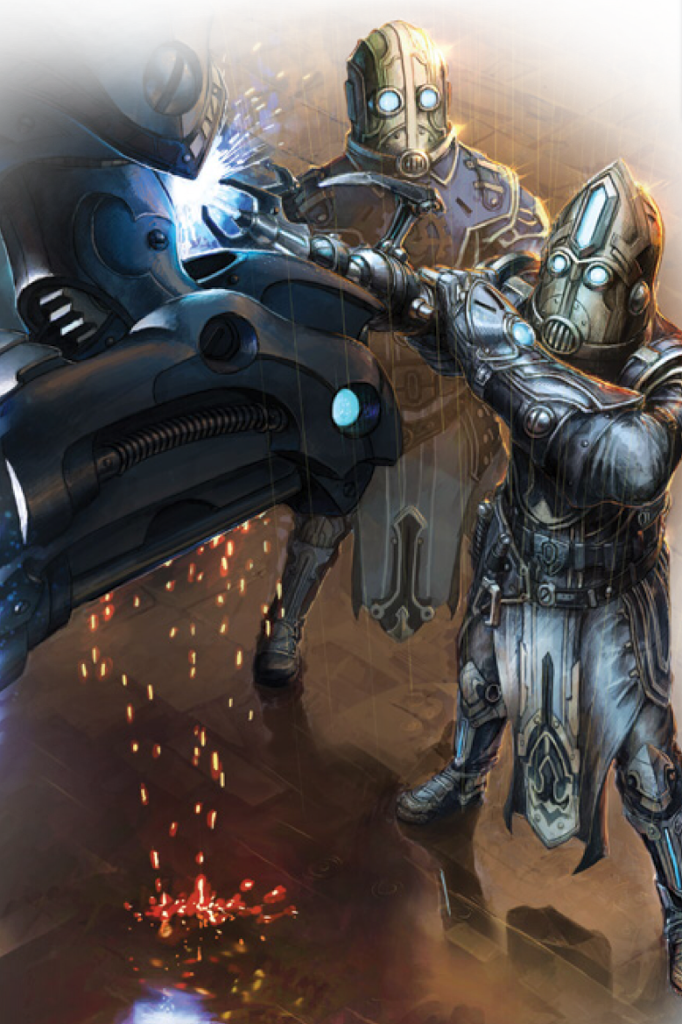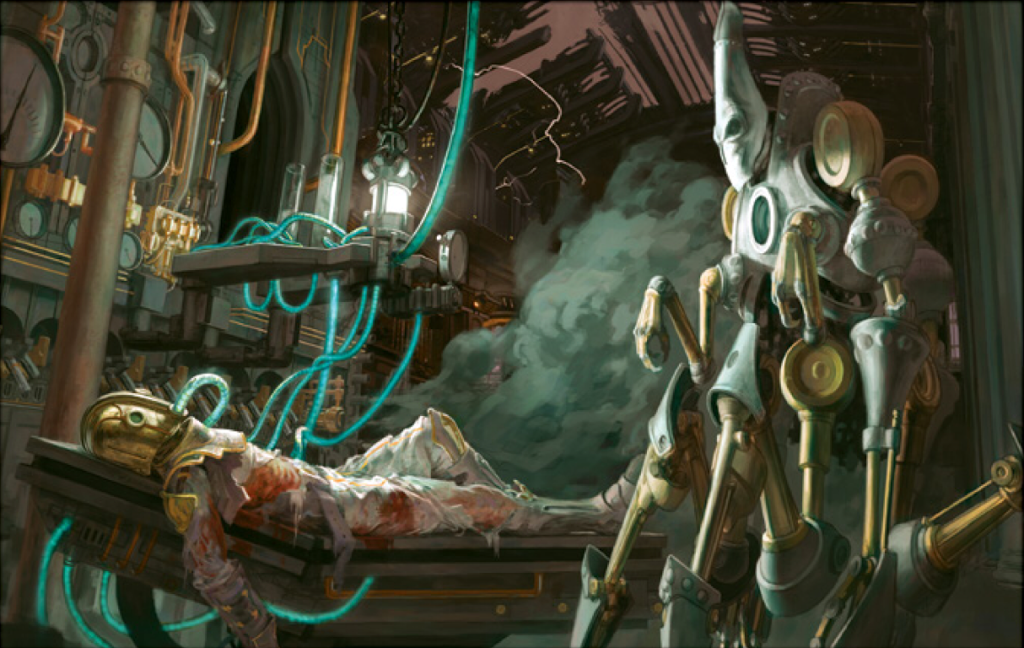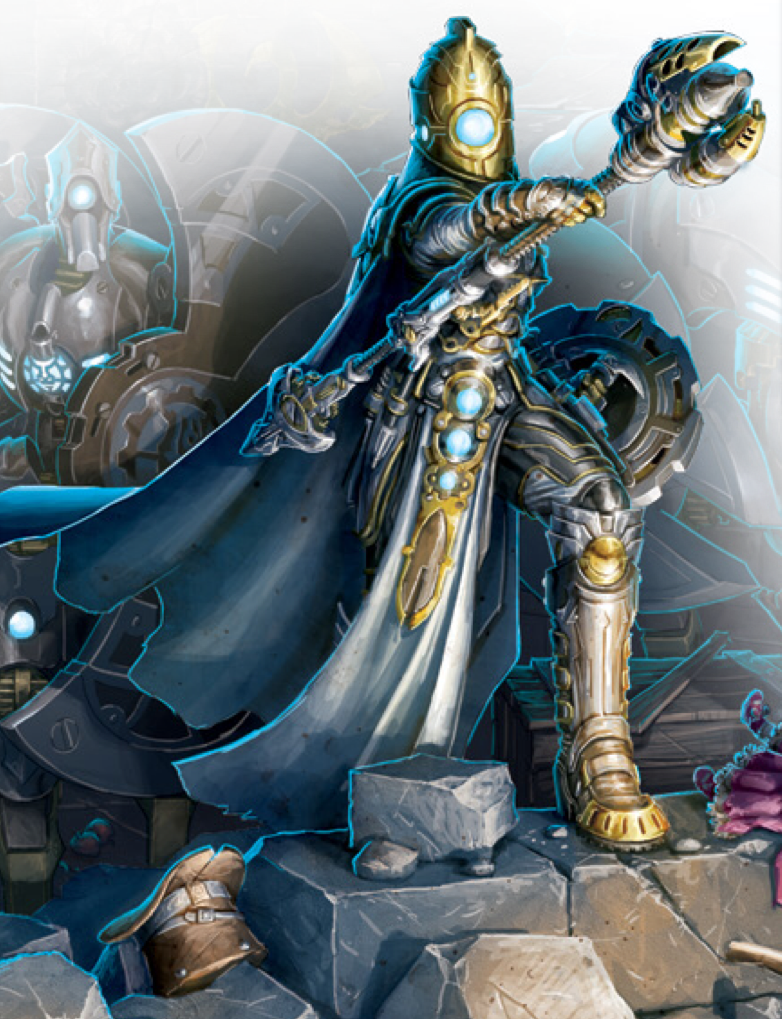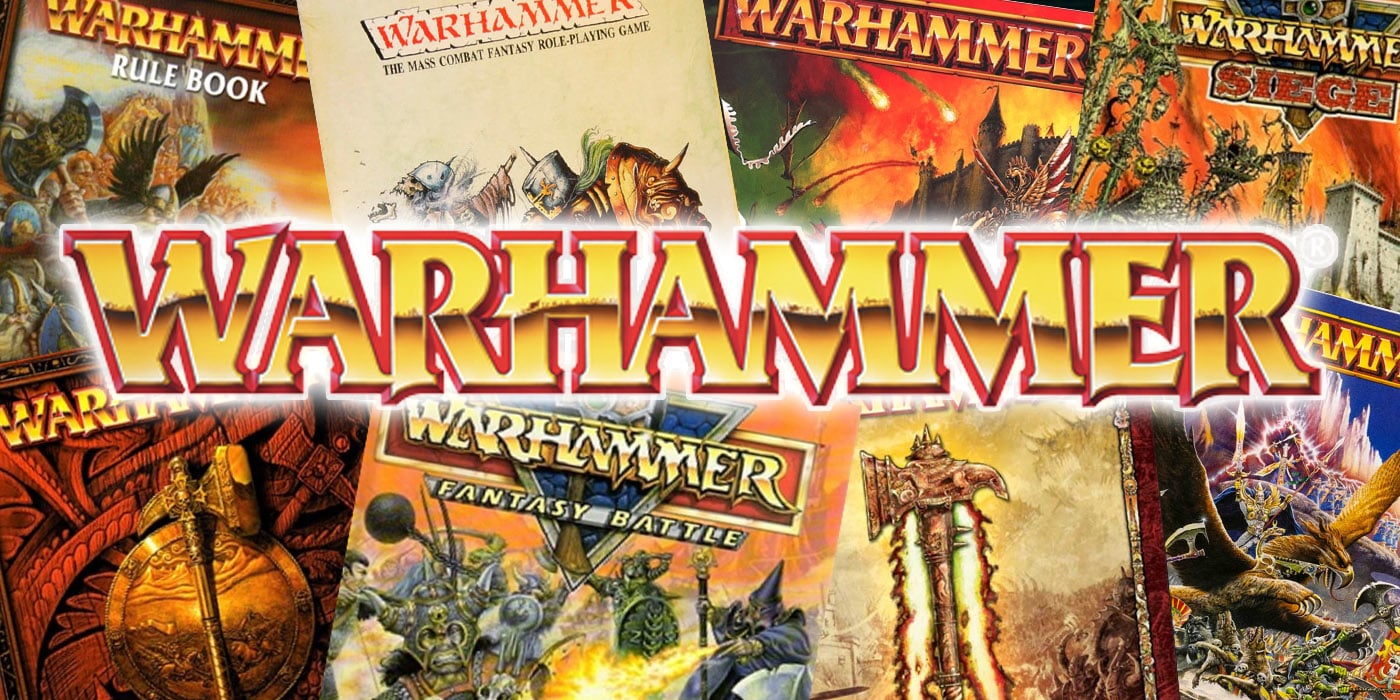Iron Kingdoms RPG – Brainstorming a Cult of Cyriss Campaign

 |
| Courtesy of Privateer Press Digital. Used with Permission. |
A two-part foray into designing an RPG campaign based around Immoren’s secretive cult of science.
Part 1: Background and Viability
A few months ago I wrote an article discussing in length how the career and adventuring company systems of the Iron Kingdoms Roleplaying Game could act as an excellent driving force for campaign design. Today we shall look specifically at one of the more esoteric offerings, specifically The Inner Circle adventuring company released in No Quarter Issue #48, and discuss its potential viability for game purposes and touch on some potential campaign ideas. Part two, which should be released within the next few weeks will focus on settling on an elevator pitch and fleshing out the details.
A New Divinity –
For those unfamiliar with the Convergence of Cyriss, it would certainly be appropriate to fill in some of the background. Cyriss is the newest divinity of the Iron Kingdoms, having only been discovered within the last 325 years by Ahgamore, the astronomer who applied alchemical and mechanikal principals to telescopes, allowing him to perceive the planet that he dubbed “the Dark Wanderer”. After this discovery, Aghamore began having strange dreams and visions that this planet was named Cyriss, which was also the name of the divine being that inhabited the planet.
As Aghamore reported this to others, most dismissed him as a lunatic, but others who had also seen the planet began having similar experiences as he did, leading to the creation of the early Cult of Cyriss. Members were often mathematicians, astronomers, alchemists, and engineers. Cult sects began to theorize and develop technology to tap into geomantic energy, arcane power that flowed beneath the surface often connected to rivers and mountain rangers. With this power unlocked, the Cult of Cyriss began to abandon conventional fuels and power sources like coal, and sites where geomantic flows converged became the seat of many cult temples.
Less than a decade after learning how to consistently tap into geomantic flows, complicated and massive calculating machines were put into use to begin exploring advanced and theoretical mathematics. When cult mathematicians began inputting complex formulae for these machines to solve, they began to notice strange errors in machine output from what would later be dubbed the Cipher Engine. These messages were studied and eventually decrypted by members of the cult, revealing messages that they believe were sent by the Maiden of Gears herself. The first of these messages was a simple directive for members of the cult to become one with machines and to abandon their flesh, leading to the creation of the Anima Corpus Procedure in which a soul could be transferred permanently into a machine. Less than thirty years later, the cult was able to succeed with the procedure when Helicratus and Lucant interred their souls into an essence chamber, a modular storage device for the soul that could be placed in a machine body.
After the his transfer, Lucant received a sudden and earth-shaking revelation from the Cipher Engine that Cyriss wished for Caen to be prepared for her inhabitance, and that the path to do so lay in the proper alignment of the geomantic flows below the surface. This has become the goal of the Convergence of Cyriss, the secret organization born out of Lucant’s discovery.While peripheral cults to the Maiden of Gears can be openly found in many of Western Immoren’s major cities, the Convergence and its subterranean temples remain secret to all but a select few, even those within the outer cults.
Now, after hundreds of years of preparation, the Phase of Alignment has began. The Convergence has started to openly battle for control over points where the geomantic flows must be redirected, erecting enormous alignment nodes to complete the process, regardless of their location. This has put them at odds with not only the druids and Iosan arcanists that battle for control over these locations, but with the Iron Kingdoms themselves.
Source Material –
I have been reading the Forces of Warmachine: Convergence of Cyriss book this week, and I am really enjoying their background quite a bit to the point that I wanted to explore the idea of developing and running a campaign designed around player characters as members of the Convergence of Cyriss, either centrally or peripherally. Before jumping further into this, it may be wise to point out the best sources for background material. The above mentioned Forces of Warmachine book is obvious. For a more narrative glance, there are two stories that jump out at me, specifically Dave Gross’s Dark Convergence and Will Shick’s most-excellent short story, Conversion, from No Quarter #48. That same issue of No Quarter provides the foundation for all of the Convergence-specific rules for the Iron Kingdoms RPG that we will be using, including rules for the Priest of Cyriss and Cyrissist Warcaster careers, vectors, clockwork vessels, weapons, equipment, and adventuring companies.
Adventuring Companies –
There are two currently available adventuring companies to work from that are specific to the Cult of Cyriss: Fringe Cultists and The Inner Circle.
 |
| Courtesy of Privateer Press Digital. Used with Permission. |
The Fringe Cultists company is an interesting option, but it seems to focus strongly around the leader of the cult and is terribly limited where it comes access to Convergence technology and resources. However, its requirements for group members are quite easy to fulfill. The Inner Circle company, conversely, is strongly limiting in player character design, specifically in that all characters in the company must be a worshiper of Cyriss and either have the Intellectual archetype, Priest of Cyriss career, or Cyrissist Warcaster career. These requirement notably eliminate the Mighty and Skilled archetypes altogether as options while also limiting the use of careers requiring the Gifted archetype to be paired with either of the two above-mentioned careers. The bonus from the adventuring company, however, is that party would have much greater access to Convergence temples and technology in addition to the University Education ability.
The challenge in my mind became to figure out exactly what such a group would be capable of doing in the Iron Kingdoms. The archetype and career requirements alone promise to make building a capable fighting unit into a challenge, but not necessarily an impossible one. While the Intellectual archetype typically is not often associated with combat applicability in the same way that the Mighty, Skilled, and Gifted archetypes are, there are a few Intellectual benefit options that would certainly help with raising a character’s strength in battle.
Combat Potential –
First, the base benefit to all Intellectual characters is a +1/+1 bonus to attack and damage rolls that also extends to other nearby friendly characters, which unfortunately, will only serve to benefit your Gifted party members since the bonus is not cumulative. Defensive-minded characters might benefit well from Flawless Timing, which converts a targeted enemy’s first successful attack against that character into a miss, appropriate for temple guardians looking to specialize in evasiveness over hardiness. Supportive characters can take Battlefield Coordination, which removes the firing-into-melee penalty for nearby friendly characters or Plan of Action for a boost to initiative in the first round of combat. More aggressive characters can take Prescient to automatically win initiative, Quick Thinking for out-of-turn attacks or quick actions, or Unconventional Warfare if they are particularly good at narrating combat.
The next bit to consider is specific careers that interact well with the Intellectual archetype where combat might be concerned. Currently, the only career that jumps out at me here is the Stormsmith. Since its attack rolls are based on the PER stat, which can be automatically boosted via the Hyper Perception benefit from the Intellectual archetype, there is some nice synergy to be found here.
The two Cyriss-specific careers are quite interesting themselves as well. The Priest of Cyriss is decidedly support-based with its suite of spell options like Deceleration, Electrodynamics, Realignment, and Guided Blade. If you were to wish that such a character were to present a direct military threat, it would do well to choose a second career that supports such behavior. The Cyrissist Warcaster is not strictly a whirling death machine, but its host of battlegroup-strengthening spells will make its vectors extremely effective in battle.
 |
| Courtesy of Privateer Press Digital. Used with Permission. |
It is also important to mention the Clockwork Transcendence ability that either of these careers can pick up once they hit either 5 INT or PER, allowing the character to have their soul transferred into an essence chamber so that they can take advantage of the formidable clockwork vessel that can be upgraded in such a way to make them quite formidable in combat. However, the only vessel with rules currently released is the Clockwork Priest Vessel, which eschews the heavy-lifting potential of the soldier vessels used by the practical Obstructors or the hulking Reciprocators for more grace and elegance. Hopefully, Privateer Press will release rules for these other vessels in the future.
That said, clockwork vessels are just as much a hinderance as they are a boon considering the constraints they put on your campaign, specifically that clockwork vessels are completely alien to the grand majority of the population of Western Immoren. Consequently, social interaction with the greater inhabitants of the setting will be quite difficult. However, there certainly would be room for political and social maneuvering strictly within the Convergence and her peripheral cults.
The Technological Restraints –
The next constraint to consider is on Convergence technology that relies on proximity to temples built at the site of geomantic nexuses, specifically vectors and devices powered by ambient accumulators. Vectors are powered solely by the ambient energy surrounding Cyriss temples that store enough to run at peak combat efficiency for five hours. Ambient accumulators, like vectors, are inexhaustible on temple grounds, but have a lifespan of one week.
 |
| Courtesy of Privateer Press Digital. Used with Permission. |
Again, at first glance this appears to really put the shackles on where you can have your player characters venture out to if they are going to take any kind of advantage of Convergence technology, but it should be pointed out that the Convergence maintains subterranean temples all throughout Western Immoren, including under many of its major cities like Caspia, Ohk, Berck, and Five Fingers, not simply in secret compounds in the wilds. Consequently, campaigns or excursions that might lead the party away from Convergence temples could grant the game master some flexibility for creating potential challenges to overcome.
Goals, Antagonists –
Where campaign goals are concerned for the players, they should certainly be designed such that they coincide with The Great Work, which is to prepare Caen as a vessel for the Maiden of Gears. The Convergence has been setting about this task by realigning the geomantic energies that flow beneath the surface. This could involve recruiting new talent, clearing away a site where an alignment node is to be built, or defending territories from those who might hinder The Great Work itself.
The Convergence of Cyriss sourcebook for Warmachine discusses three strong potential adversaries to work against: Circle Orboros, Ios, and the Cephalyx. Circle Orboros and Ios make great antagonists because both are forces that are fighting for control over sites strong with geomantic energies, or “ley lines” as they would call them. Since the Retribution of Scyrah has marched to war, their presence at such sites has greatly increased. The Cephalyx are appropriate simply for their tendency towards subterranean lairs that might otherwise be suitable for Convergence Temples. The new Cephalyx book discusses the enmity between the Convergence and the alien Cephalyx quite a bit, and makes for a good potential source to explore.
Next time, we will start designing the campaign itself. Stay tuned!


